770 Is Here!
Bricks, aura, and the multiplication of the Lubavitcher Messiah
George Prochnik
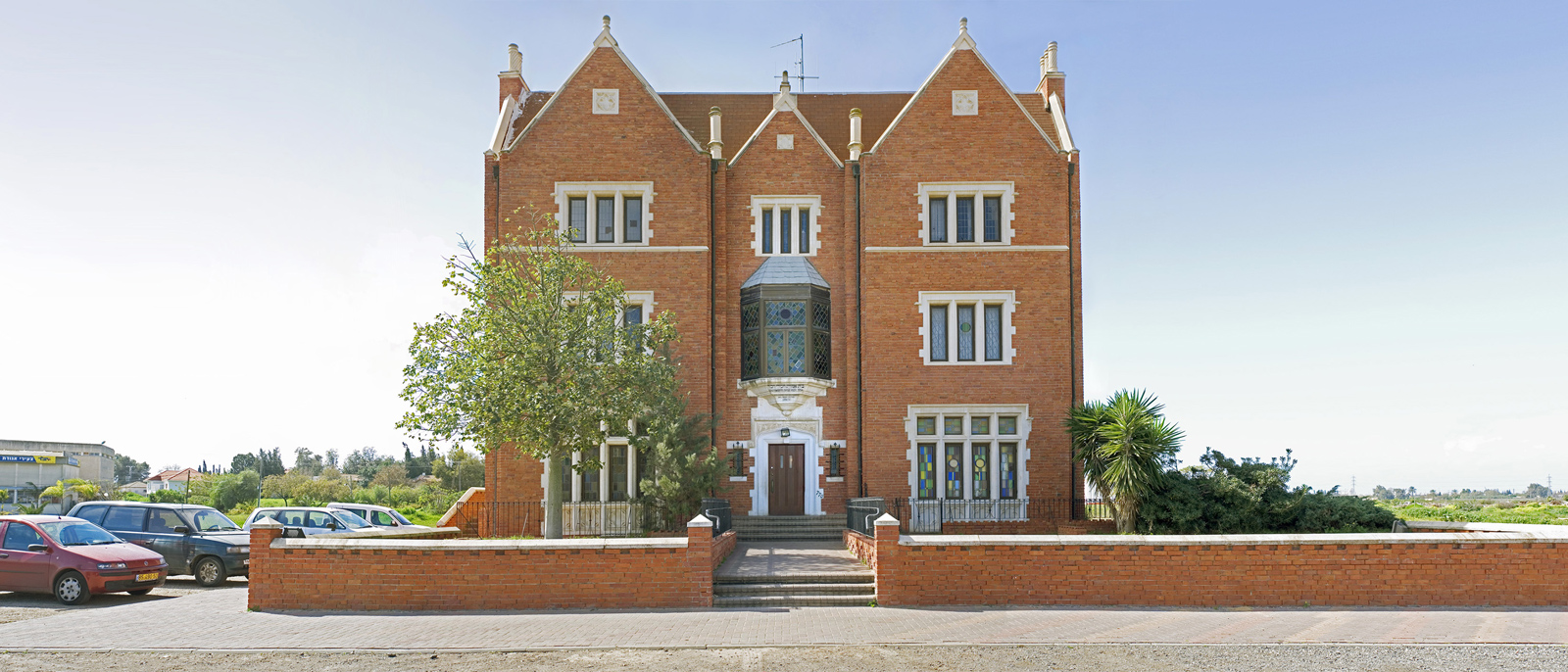
Repetition and recollection are the same movement, just in opposite directions, because what is recollected has already been and is thus repeated backwards, whereas genuine repetition is recollected forwards. Repetition, if it is possible, thus makes a person happy, while recollection makes him unhappy.
—Søren Kierkegaard, “Repetition”
On the flatlands of central Israel, not far from Tel Aviv, “770,” the triple-peaked brick Gothic Revival home of the Rebbe, rises in a spanking orange vertical from a large parking lot. Stroked on one side by the fronds of a low palm tree, it appears fresh as a desert flower sprung up overnight in a flood’s wake. On Pico Boulevard in Los Angeles, 770 has the same basic three-story profile, its windows and doorway framed by limestone surrounds, but here the house has doubled in size and added another trio of gables. Edged by a gas station and displaying a relaxed, liver-colored spread in its bulk, the building makes itself at home in the sprawling, unbuttoned metropolis. In New Jersey, 770 has gone a bit suburban-mall office park. On the shore of Lac Désert near Montreal, one might detect a hint of the trademark Canadian maple leaf in 770’s sharp angled gables. In São Paulo, 770 is jammed between soaring white skyscrapers; it has shed girth to squeeze into the teeming megacity. And in Milan—where 770 is wedged between an ample, peach-hued palazzo and a low, old, murky yellow home—the bay window distinguishing the original structure’s center section has transformed into a stylish glass balcony.
All thirty-five-and-counting architectural echoes of 770 Eastern Parkway around the world reprise the primary structure in Brooklyn, but most exhibit suggestive tweaks to the original’s color and shape. Often, the buildings take on token features of their immediate environment, camouflage-style, adhering to Lacan’s precept that “repetition is not reproduction.” But what of the now-dim, rust-tone mothership in Crown Heights? How did that “original” home of the Rebbe come to exist and why has it spawned such an abundance of progeny that it seems to enact structurally the Biblical injunction to bear fruit and multiply?
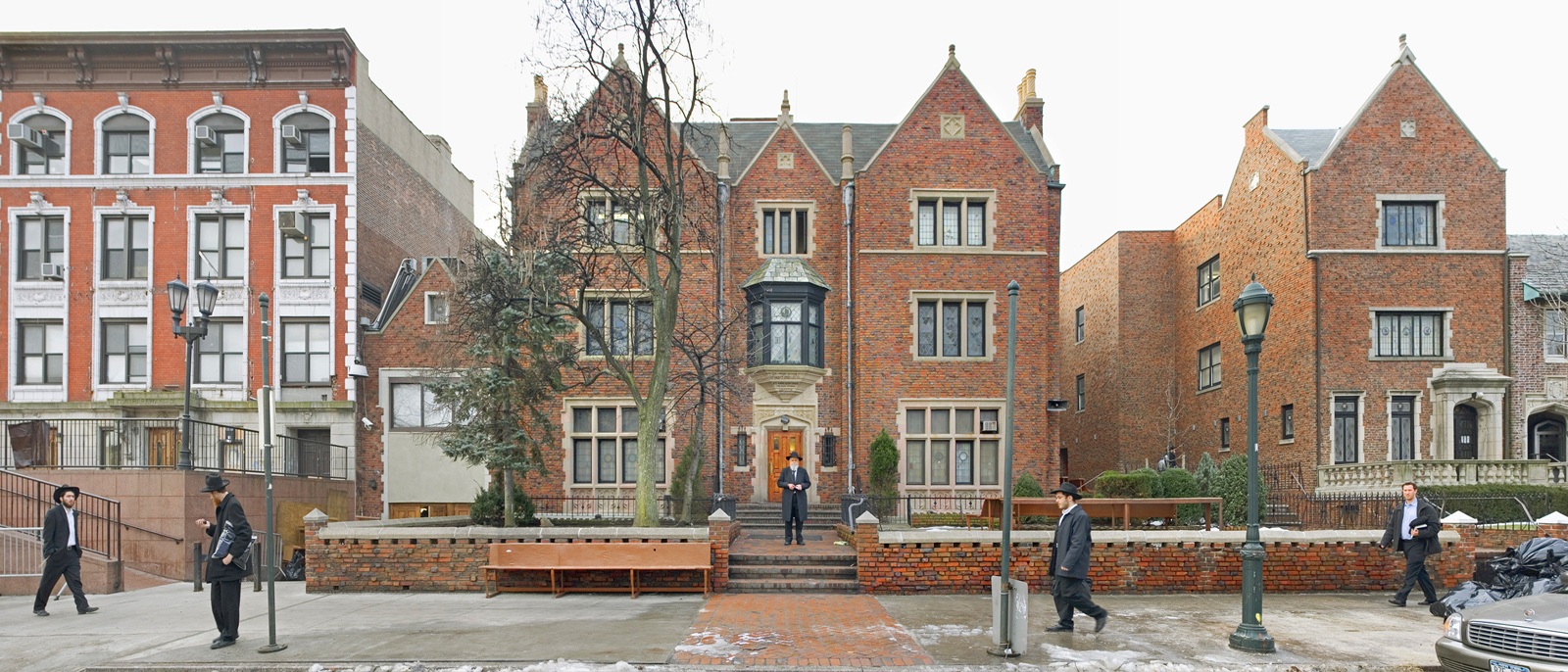
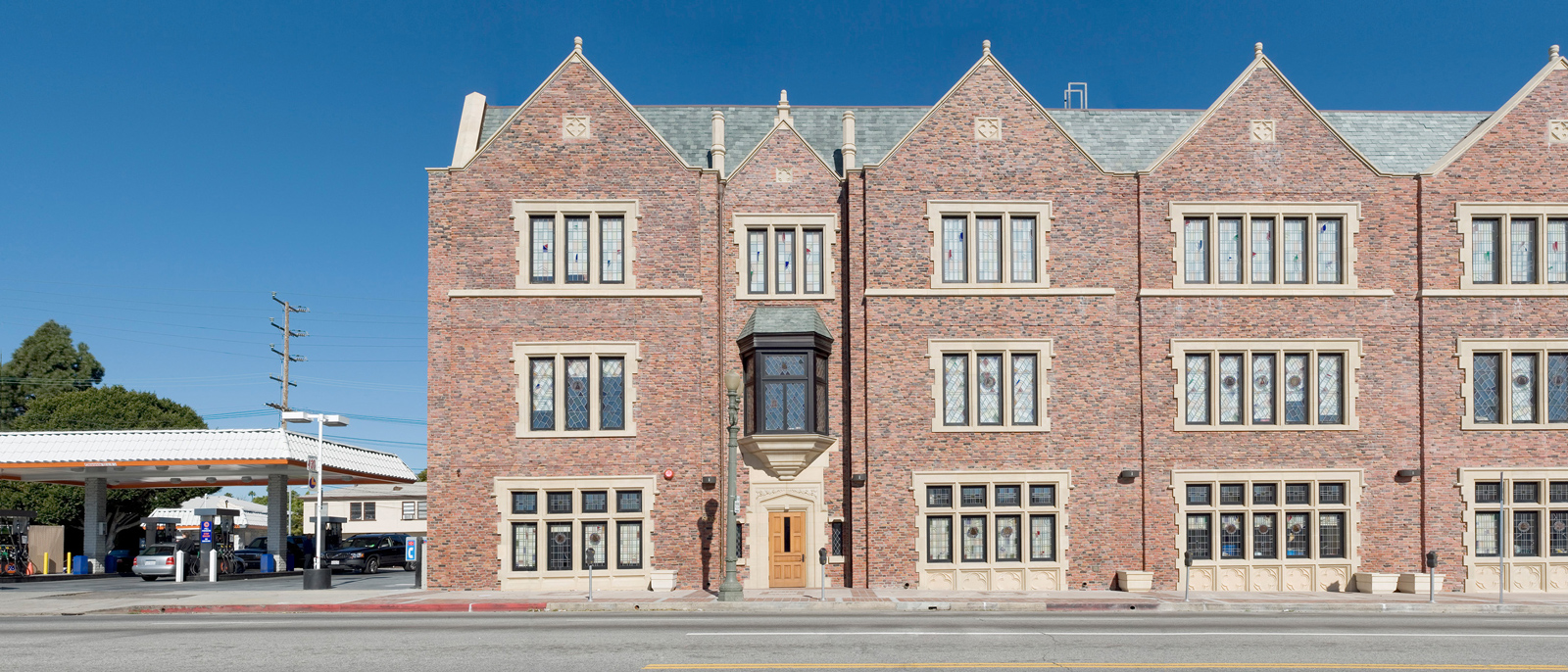
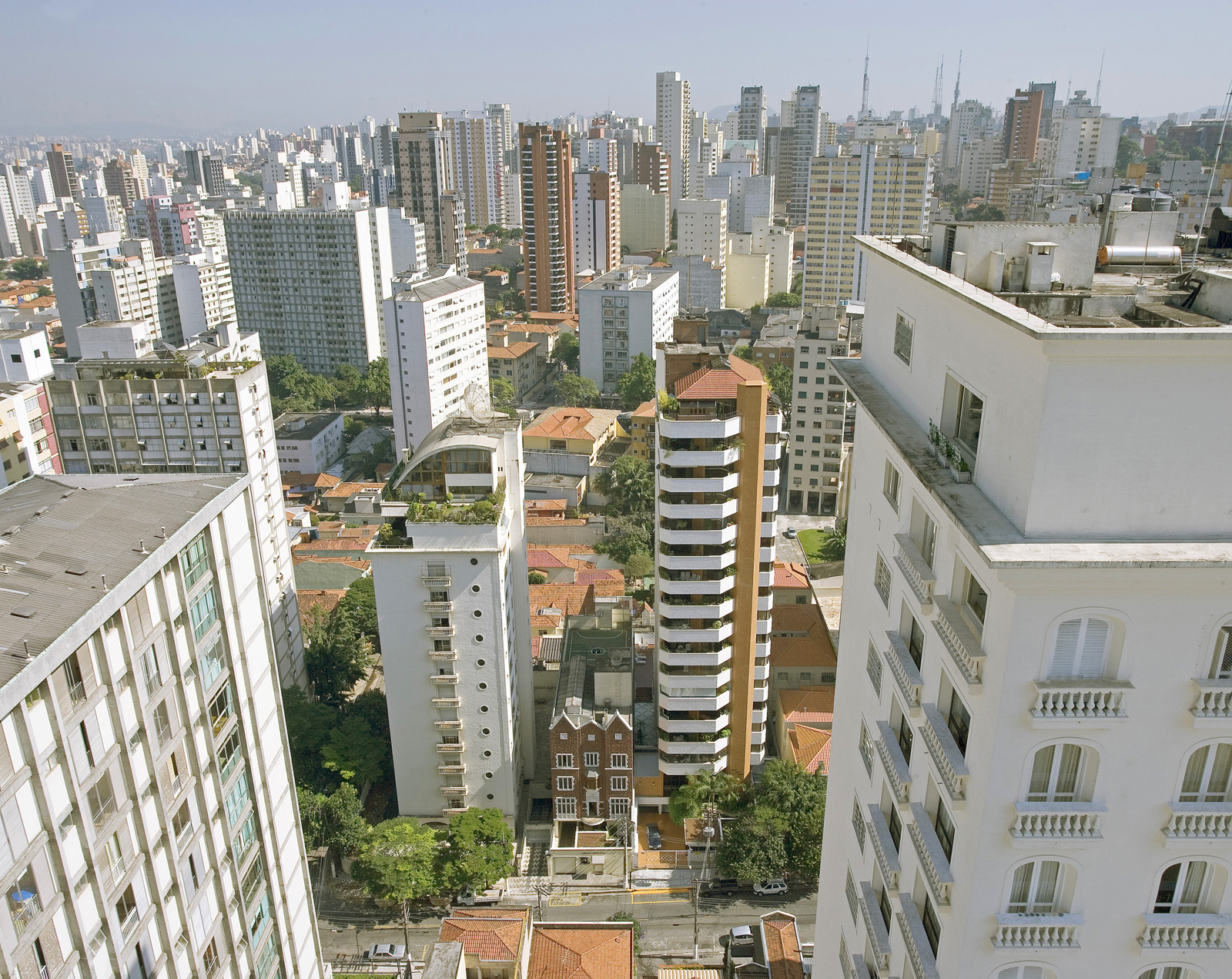
• • •
Edward Kline, a Long Island–based architect active in the first half of the twentieth century, was a dedicated master of historical reproduction well known for his Tudor-, Colonial-, and Gothic-style homes. But he understood that true replication doesn’t come cheap, even when, as was the case with Colonial buildings, the original forms were so admirable precisely because of their down-to-earth clarity. As Kline explained to the New York Times in 1937, “the first settlers used wood because it was available, and fieldstone, too, when it was handy.” If they became a bit more prosperous, they might add brick work. “The result was a house of simple functional lines, built of hand-split shingles, wood siding, random-laid fieldstone or white-washed brick as circumstances permitted.” But to correctly build such a structure now was just as expensive as to produce the more ornate styles. A single dormer window could cost upward of a hundred dollars, he warned. The whole endeavor of fine historical reproduction had been endangered due to the knock-on effects of the Depression, such as the government’s decision to lower down payments on the construction of most homes to just ten percent of the purchase price. These would lead, he prophesized, to “modernized” versions of the true styles becoming more prevalent as a way of curtailing building costs. Reproduction was likely to become more a matter of symbolic gestures than genuine replication. How this would pan out he declined to speculate; but a wistful note pervades his analysis.
Kline was probably feeling a measure of personal bitterness on such matters given his own recent experiences attempting to honor his replicative craft. In 1936, he’d completed a sizeable brick Gothic-style home and clinic at 770 Eastern Parkway for Dr. S. Robert Kahn. Located in a neighborhood that had become a haven for well-to-do, assimilated Jews—and designed to blend in with the numerous other historicized structures on the street—770 was meant to herald Kahn’s arrival to affluence. But in fact, he could never really afford the venture, which boasted flooring and ceramic tiles imported from Italy, heavy oak doors fitted with copper knobs, a state-of-the-art domestic elevator, and various stained-glass garnishes, including a slightly scary Edwardian-children’s-literature-style window image of Jack and Jill, with Jack sprawled out prostrate before an overturned bucket and a panic-stricken Jill lifting one leg pre-tumble just above him. Kahn kept trying to stiff Kline on fees, until eventually Kline took him to court—and won his case. This defeat was only the beginning of Kahn’s downfall. In 1937, he lost his medical license for performing illegal abortions. The next year, a Bronx woman died from one of his botched procedures. A year later, Kahn pleaded guilty to tax evasion and went to prison. After his release, he ostensibly became a chauffeur on Long Island, but was nabbed by the law once again for continuing to perform clandestine medical treatments in his kitchen in Great Neck, including yet more abortions. As Andrew Silverstein has reported in an informative essay about the building’s vicissitudes for The Forward, in the midst of Kahn’s cascading troubles, 770 Eastern Parkway was repossessed by the bank. This was the moment when the Lubavitchers moved in.
It would not appear the most auspicious prehistory for a building that would become the home of Menachem Mendel Schneerson, “the Rebbe,” the most revered leader of the Chabad Lubavitchers, and in the eyes of many followers the Messiah himself. But on some level, given the movement’s foundations in a dynamic matrix of miracle-driven, historical recuperation, perhaps the stain of Kahn’s cruel malpractice would have been conceived as inviting—or at least no match for—the Rebbe’s intercessional presence. Chabad has always evinced a penchant for dialectical mysticism. Motti Seligson, the Chabad’s director of media relations, aware of the building’s fraught past—its topsy-turvy metamorphosis from a site of exploitative bodily violation into a hub of physical transcendence—has alluded to the element of divine providence attendant on such matters.
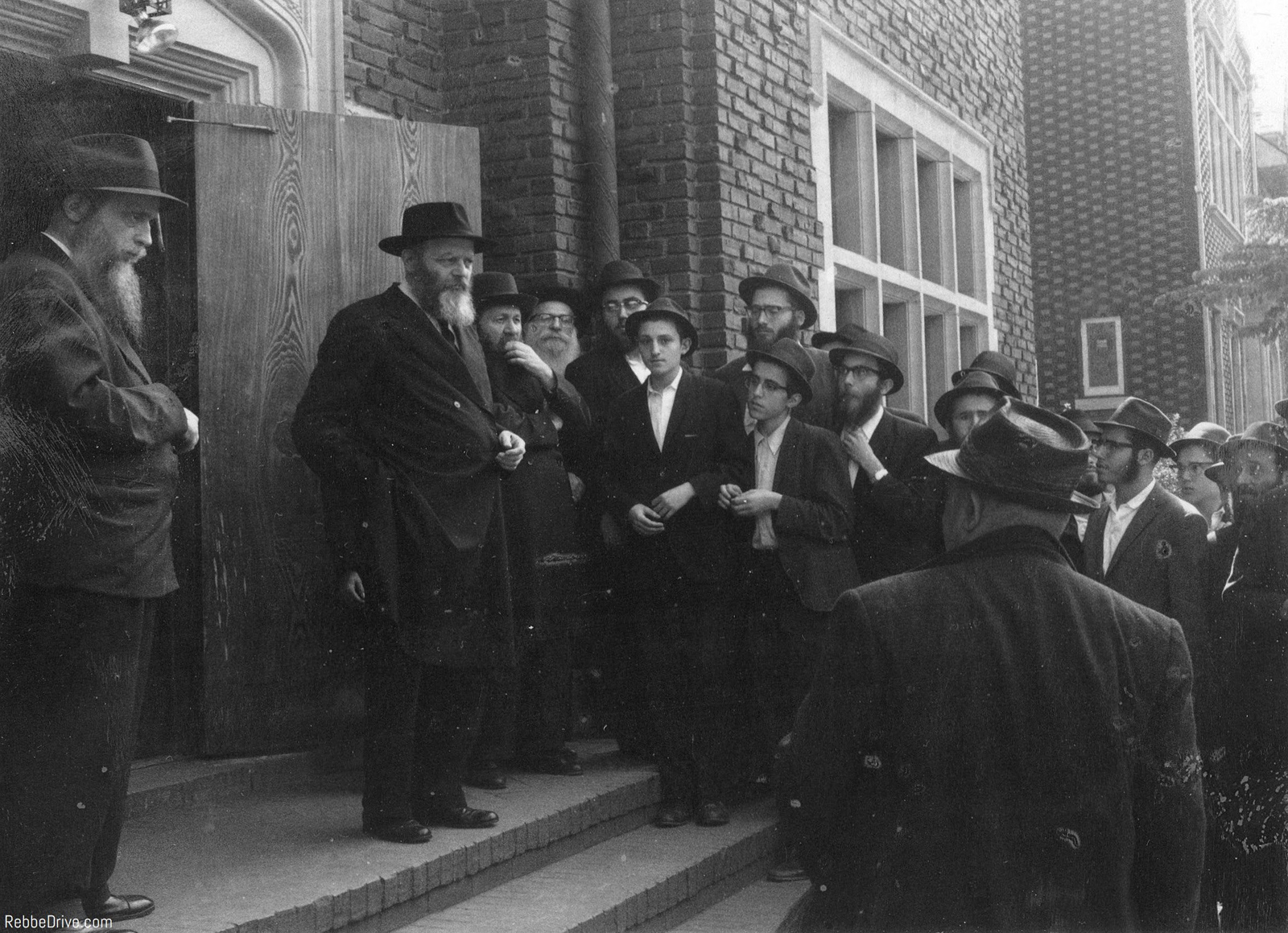
In 1940, when the building was bought as a home and office for the former leader of the Chabad Hasidism, the Rebbe’s father-in-law, Rabbi Yosef Schneersohn, the Lubavitchers were a small, languishing branch of Hasidism, many of whose members, including Rabbi Schneersohn, were Holocaust survivors. Schneersohn (who was himself referred to, in a spirit of veneration, as “the Rebbe” until his death and his son-in-law’s ascendancy) was confined to a wheelchair and the house’s chief asset was understood to be its most modern technological feature: the elevator. The fact that 770 already had a mechanical lift installed but was being sold at a bank-sale bargain price made it a rare New York real estate opportunity. The purchase met with resistance among neighbors, who were afraid that the group, full of sketchy immigrants from the Old World, would bring down property values. They organized a petition against the sale, but it went through regardless, leading the Rebbe’s followers to brag in one of the movement’s journals of how local property owners little realized at the time “that down the road the neighborhood would be saved from crime and violence only by virtue of the Lubavitcher Chassidism with the Rebbe”—meaning their leader’s supernatural influence.
By the time Menachem Schneerson’s father-in-law had passed away a decade later, the building had become a center for prayer and learning, in addition to serving as the headquarters of a rapidly growing movement. A synagogue was created on the lower level, which had once housed Kahn’s clinic. Eventually a large study hall was established as well. Despite a smattering of decorative flourishes left over from the original building, it’s a humble space given the scale of its communal prominence. This relative modesty has itself been valorized by the Lubavitchers as a sign of the building’s connection to longstanding Hasidic traditions of the schtiebel, an everyday site of communal worship established in domestic spaces. Besides, since the group believes that everything in the Rebbe’s ambit acquires a measure of his holiness, in a sense the more profane to begin with, the better—all the greater the miracles stemming from his intercession.
Early on, along with its homeyness, “770” (as the Rebbe’s house was soon nicknamed) began to acquire a symbolic iconography. For instance, the triple Gothic pediments are seen as representing the three pillars that Talmudic sages identify as holding up the world: Torah, Temple Sacrifice, and Charity. The house’s three stories, meanwhile, are said to correspond to the three highest spheres in the Kabbalah’s Tree of Life, Chokhmah, Binah, and Da'at [Wisdom, Understanding and Knowledge]—the first letters of which combine to form the acronym, Chabad.
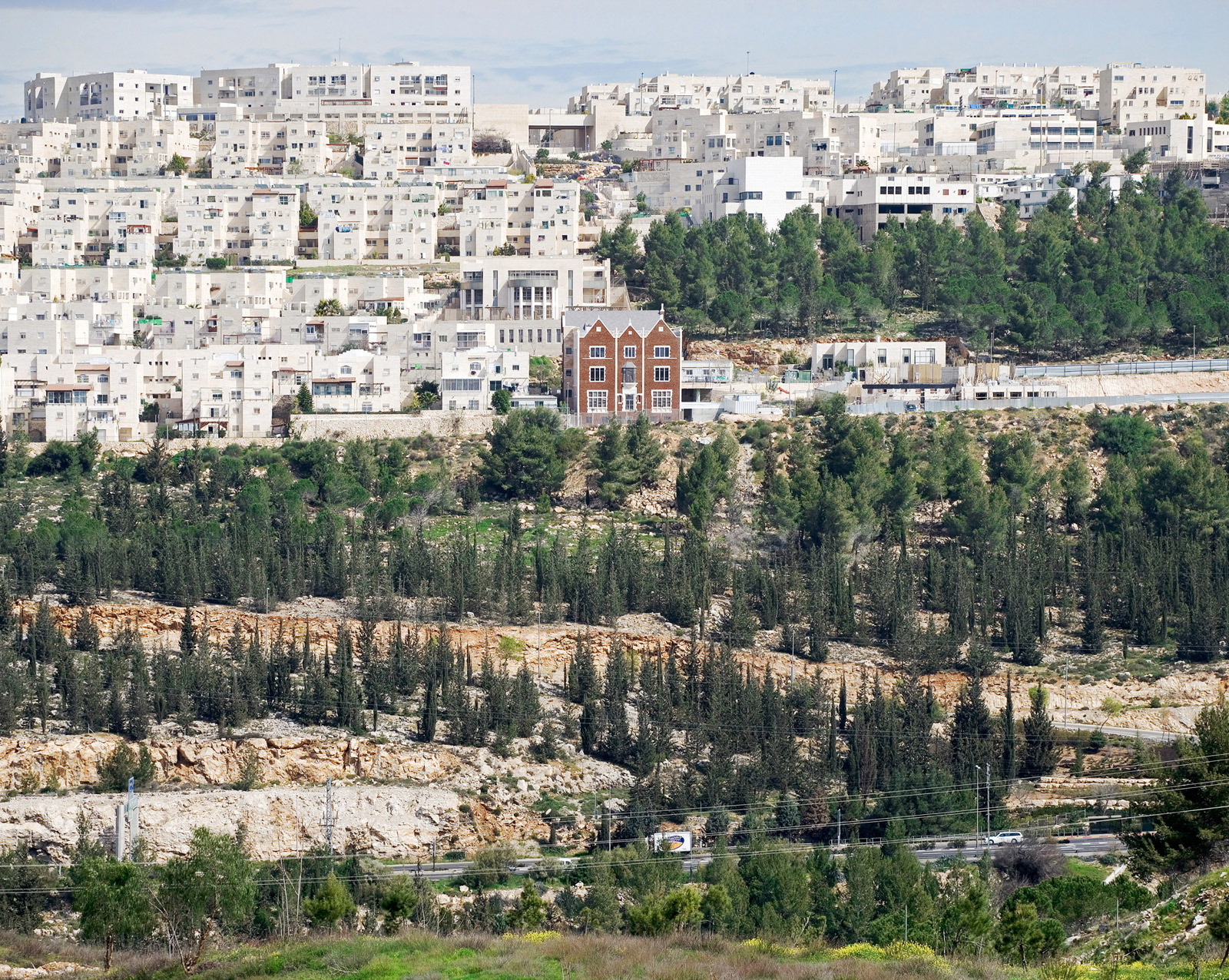
As the possibility that the Rebbe was himself the long-awaited redeemer gained credence among his followers—a trend which he repeatedly nurtured with well-planted hints—the house’s symbolic lexicon multiplied accordingly. The number seven, for example, has numerous metaphysical reverberations within Judaism, evoking everything from the seven days of Creation, to the seven-branched menorah that graced the Temple in Jerusalem, to the mystical notion of seven divine emotional attributes. In Gematria, the kabbalistic practice that matches letters and numbers to disclose charged correspondences, “770” can be read as “Beis Moshiach,” the House of the Redeemer. It can also be aligned with the Hebrew word paratzta, meaning “You spread out” or “You burst forth.” Schneur Zalman Levin, a Lubavitcher writing in Beis Moshiach—a weekly publication describing itself as “a content-filled Chassidishe quality family-oriented magazine, imbued with a spirit of Geulah [redemption] and Moshiach [Messiah], for everyone to enjoy!”—has drawn on remarks by the Rebbe to propose that this concept of paratzta indicates, “You shall burst forth westward, eastward, northward and southward.” This signifies that light will issue forth to the four directions of the world, elevating all points of the compass to the level of the land of Israel, Levin elaborates. Both aspects of the Gematria’s gloss on 770 have played an inspirational role in the decision to duplicate the Rebbe’s house around the world. For, according to the Chabad Hasidim, the destiny of this house in fact involves nothing less than “the redemption from Babylon (exile), by means of the power it grants the Jewish people to accomplish their mission of transforming Babylon (i.e., lands that are not part of Israel) into the land of Israel.”
• • •
The first replica of 770 was built in the early 1980s in California, across the street from the UCLA campus. In an email exchange, Shira Cunin—the daughter of Rabbi Shlomo Cunin, who was responsible for the building’s construction—provided me with her story of the project’s genesis. Her father, Cunin said, had been given a special mission by the Rebbe to travel to California in the 1960s as his shliach, or emissary, to establish a beachhead for the movement there. He originally had many different ideas for how he might realize his mission. Perhaps, the rabbi mused, he would start a Hebrew swim school. Eventually he proposed to the Rebbe that he build a “Chabad house,” as a kind of local center for the movement. The Rebbe “loved the idea” and gave his blessing to the concept, Cunin explained to me, remarking that these houses would spread all over the world and their doors would be open around the clock to people in need. (There are now more than 3,500 Chabad houses around the globe.) In 1980, a little more than a decade after its establishment, the building was destroyed in a devastating fire—perhaps the result of arson—in which three people died. It was “a difficult, broken time, when my father began to think of rebuilding,” Cunin said. But then her mother had an idea, which Cunin sees as a symbol of her deep faith and inspiration in every circumstance. “Let’s rebuild the Chabad house in the same shape and same design as the Rebbe’s house—how special would that be?” she suggested. In Cunin’s understanding, her mother’s notion represented the prospect of “bringing all the blessings of 770 to California.” Given the power of these blessings, even to look at the building would have the potential to confer some of that power.
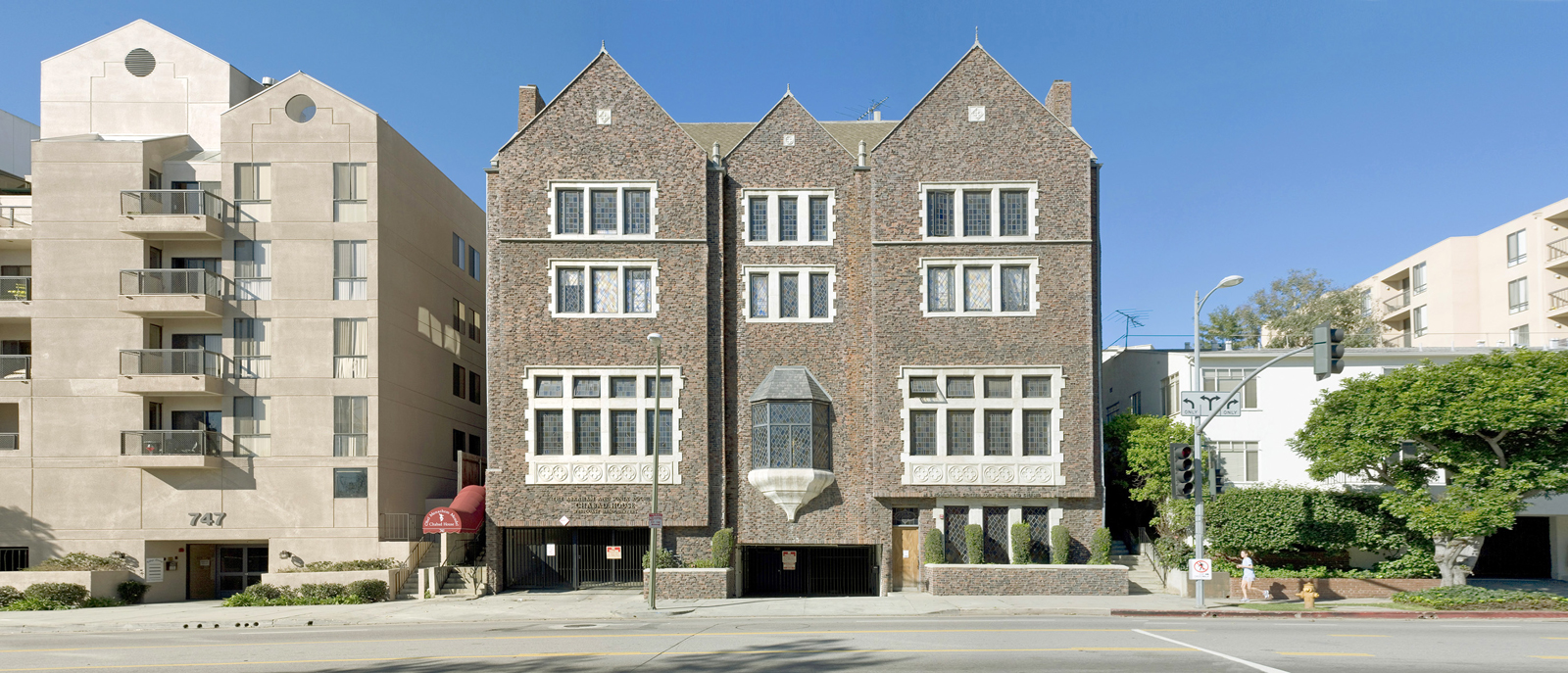
Rabbi Cunin didn’t know, however, whether this bold ambition represented a worthy undertaking. Rose, an aunt of the family who was friends with the Rebbe’s wife, was asked to consult this esteemed Rebbetzin. Eventually they received a response from her. “We thought that that would be a very special honor”—the idea of making the Chabad house in California the shape of 770—she told Aunt Rose. That was the first time such a venture was conceived of, Cunin said, “and once it happened, the incredible positive inspiration—because of the whole mystical aspect—we’re all learning the same Torah and mystical deeper dimensions of the Torah—there was a synergy of ideas.” So it happened, she noted, that other Chabad groups around the world also thought it was a wonderful idea and repeated the process.
In 1992, while he was praying at the grave of his father-in-law, the Rebbe suffered a stroke that left him unable to speak and partially paralyzed. But this event served only to intensify speculation that Menachem Mendel Schneerson was the Messiah and would soon commence the great work of humanity’s salvation. He was already perceived as performing countless singular acts of rescue and deliverance—many of them directly associated with 770. In June 1994, however, even as expectations that the Rebbe would imminently reveal himself were reaching a fever pitch, Schneerson died. Or at least, to all appearances, he departed the realm of the living.
• • •
For many Lubavitchers, the Rebbe’s death was a shattering event. Hasidic groups have traditionally risen and fallen on the strength of their leaders. They are reliant on this personage’s individual charisma and the vitality of particular dynastic lines for their own sense of spiritual potency. The Rebbe had had no offspring (another attribute traditionally associated with the Messiah). Nor had he appointed a successor. It’s been suggested among some of his followers that 770—with all its emblematic properties and miraculous powers—should itself be understood as the embodiment of the Rebbe’s seed, a seed that grows only more fertile over time. Shortly after the 2020 groundbreaking on the latest replica of 770, this one in Abuja, Nigeria, one Chabad rabbi issued a challenge on Twitter. Six out of seven continents now have their own 770, he announced. When will Antarctica get theirs?
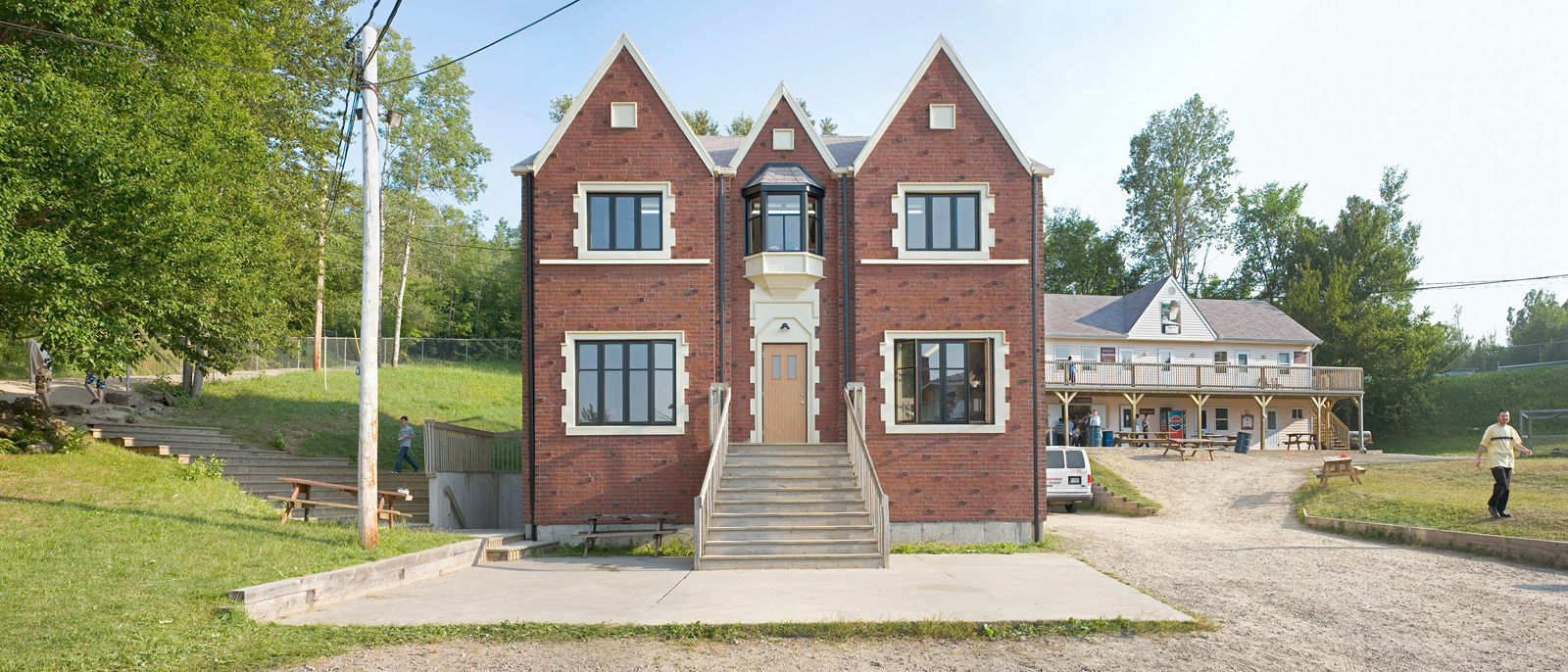
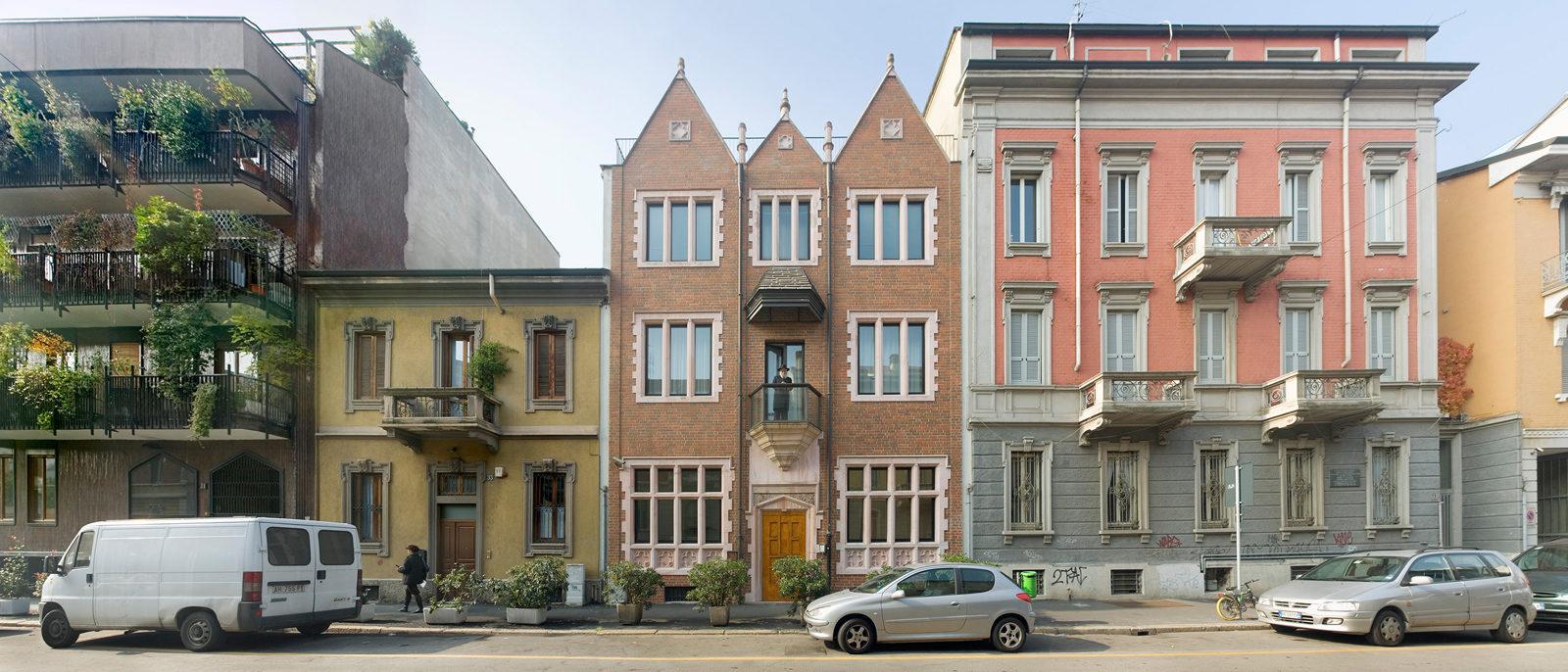
In With Us More Than Ever, a remarkable study of the posthumous proliferation of the Rebbe’s influence and power, Yoram Bilu has shown how 770 and the building’s multiplying spatial doppelgangers exemplify the ways that the apparent end of the Rebbe’s worldly existence in fact served to magnify opportunities for experiencing his presence, whether through replications of the house, his countenance on photographs, or other material traces.
Moreover, instead of death diminishing his perceived capacity for miraculous interventions, the closer the Rebbe has come to posthumous ubiquity, the nearer he has drawn to a kind of omnipotence. For example, the Rebbe famously wrote letters answering questions from Lubavitchers all over the world. Selections of these letters were eventually anthologized in a multivolume collection known as Igrot Kodesh (Holy epistles). Since the Rebbe’s demise, the Lubavitchers, riffing off age-old practices of bibliomancy, have used the Igrot Kodesh to get the Rebbe’s guidance on pressing matters. Slipping a sheet of paper with their own query into the text at random, they then read off a response from the Rebbe’s printed replies on one of the pages between which it’s inserted, interpreting this passage as a direct response to their own question. There are numerous other such practices, such as watching videos of the Rebbe’s talks and taking cues from the precise moment when the Rebbe appears to look directly at a viewer who is appealing for counsel. Some of these techniques have a Magritte-esque “meta” quality; for example, photographs of people holding photos of the Rebbe are discovered to carry a spectrum of significances only revealed through the image within the image.
In this light, Bilu’s book argues that 770 might be seen to challenge a core premise of Walter Benjamin’s essay “The Work of Art in the Age of Mechanical Reproduction,” albeit in a not exactly aesthetic context. Instead of the aura of the original 770 dissipating with the loss of the building’s singularity, it seems to have intensified with its material replication. The Rebbe himself focused his education on mathematics and philosophy in Berlin and then, having fled to Paris after the Nazis’ ascendancy, studied in preparation for an intended career in practical engineering. He always remained a fervent advocate of technology as key to the broad dissemination of Judaism’s global presence and the larger salvational mission for which he became the most conspicuous figurehead. “Radio was created specifically for the Messiah,” Schneerson once commented. The centrality of photographic images to the perpetuation of the Rebbe’s presence is self-evident within Chabad Hasidic enclaves. A single Lubavitcher home might have multiple images of the Rebbe, including more than one presenting him in his signature pose, back slightly hunched, big black hat, jolly yet fierce gaze at once elusive and concentrated, densely filigreed white beard, one hand raised in a gesture of strength or blessing—not to mention the billboards, posters, etc. in the neighborhoods where the community resides.
Bilu argues that the movement has developed a fecund visual culture unprecedented in the history of Judaism. It is thus not coincidental, he suggests, that Chabad Hasidim often cite a prophecy from the Zohar that “the gates of wisdom will open above and the springs of wisdom below in the year 600 of the sixth millennium (on the Jewish calendar), so as to rectify the world and prepare it for the redemption.” This dating of wisdom’s epiphany corresponds with 1840 in the Western calendar, and photography, Bilu notes, was invented in 1839–1840.
There is now a twenty-four-hour live feed operating from the house. When I took a glance at 12:20 pm British Summer Time on a Monday in June 2022, the camera was orbiting round and round 770’s large, present-day study hall space. A couple of dozen Lubavitchers were present, most engaged in morning prayers—standing and swaying, holding their prayer books, draped in white tallith—while others sat at long tables, poring over books. Wooden bookshelves lined the whole of one big wall. On a horizontal panel above one side of the shul, a big banner printed with blue block letters read “MOSHIACH FOREVER AND EVER.” Another article in the Lubavitcher’s journal Beis Moshiach encapsulates the appeal of this new media resource: “Picture a shliach in Alaska or Katmandu, tired after a long day. Suddenly he feels a longing for 770. Presto!—with a few clicks of his mouse he’s in 770, seeing and hearing what’s doing—participating in a farbrengen, hearing the speakers, lectures, and stories that go on into the night.” Some of the early, uncommercialized, idealistic promise of online reality that writers such as Jaron Lanier have evoked nostalgically remain alive for the Lubavitchers, although the perils of temptation are also acknowledged. Even the article celebrating the live feed includes in its heading a “Disclaimer Regarding Using the Internet.” The author notes that directors of the site say that it “is for those who, for whatever reasons, are already connected to the Internet, but a chassid who wants to go on the Internet should consult with his rav [rabbi] or mashpia [spiritual mentor].”
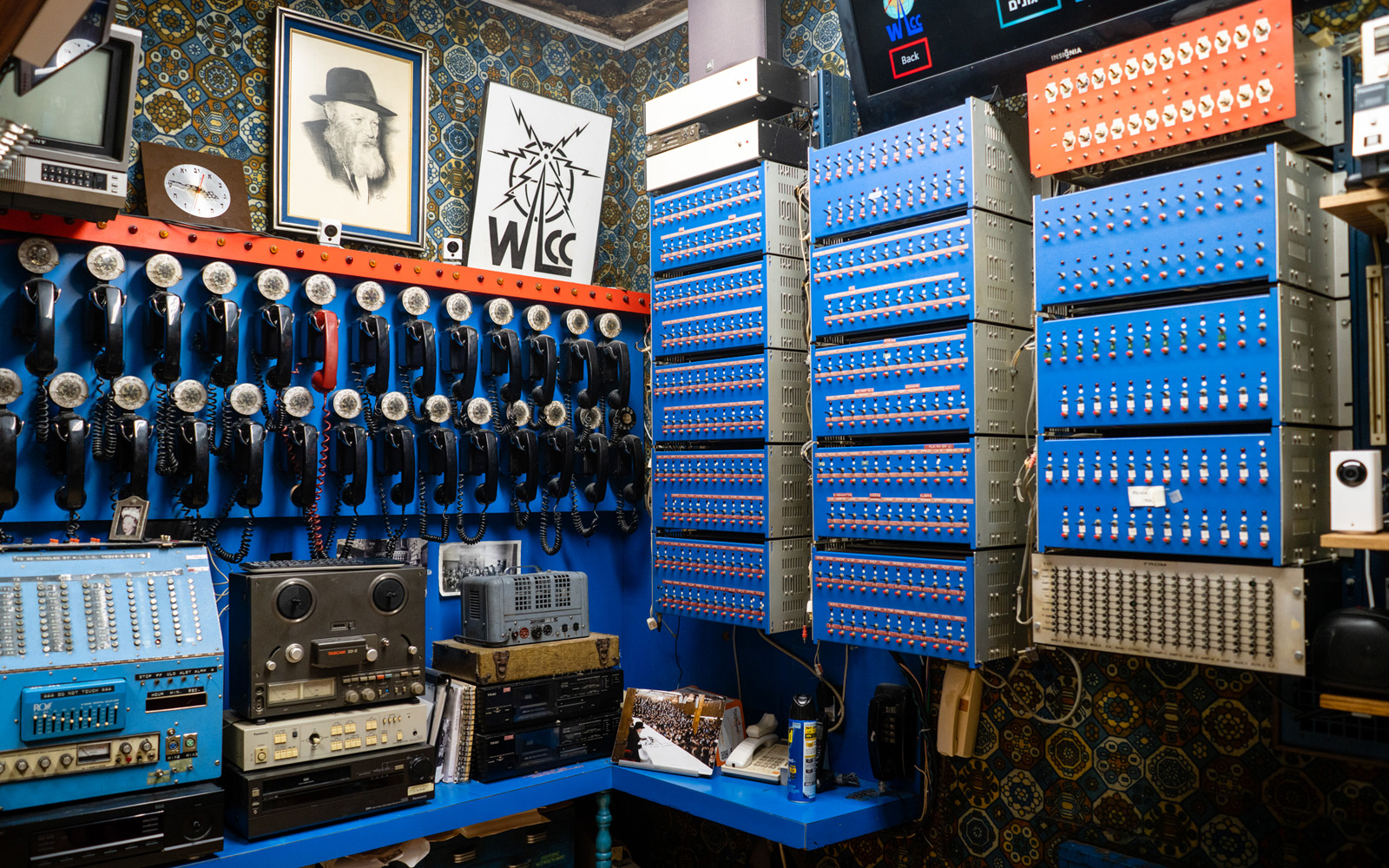
Following the event of June 1994, the Lubavitchers split into two groups, one acknowledging the Rebbe’s death, the other, known as the Meshichists, viewing his absence as the effect of an occlusion that formed a necessary phase of the Messiah’s full self-revelation. (There’s a long tradition in the Kabbalah involving the “birth pangs” of the Messiah, signifying the travails that must accompany his complete assumption of his mission.) From this perspective, the Rebbe’s apparent physical removal is a consequence of the limitations of our mortal perceptual apparatus. Bilu argues that although the Meshichists represent a numerically smaller, often more socioeconomically marginal, element of the Lubavitchers, the lines between them and the movement’s mainstream are more porous than is generally acknowledged. The Chabad literature I reviewed while preparing this essay all seem to support this view. Bilu suggests that the Lubavitchers’ view of the Rebbe bears pronounced sociological similarities to that of secular cults in relation to figures like Elvis Presley, whom some fans claim never died, and Che Guevara, whose name often appears in merchandise with the slogan “Che lives.” Given the constant stream not just of sightings but also of tangible real-world actions attributed to the Rebbe, however, an even more accurate analogy might be with the growing ranks of idolized Soundcloud rappers—such as Pop Smoke, XXXTentacion, and Juice WRLD—who die young but whose producers endlessly slice and dice their stockpiled miscellaneous recordings in order to continue regularly releasing new posthumous albums and studio-fabricated “collabs” with other, still organically living rappers. Crucially, the iconography of 770 is shared to a considerable extent across the whole of Chabad, even though it may be only the Meshichists who have come to see the site as the literal, preliminary manifestation of the Third Temple.
In Beis Mosiach, the Lubavitchers have invoked a famous Talmudic argument in which one sage, Rabbi Yitzchak, remarks, “The [minor Holy Temple is embodied in] the synagogues and study halls of Babylon,” while another sage, Rabbi Elazar, contends, “It [is embodied in] the house [of worship] of our master in Babylon” to make the case for 770 being the active proxy temple housing both the spirit of the Messiah and the actual Divine presence. “The Master’s House is a study hall” the Lubavitchers note, while the title of Rebbe, “‘our Master/Teacher’—is borne by one who teaches Torah to disciples.” The idea of lesser temples that prefigure from locations in exile the construction of the third temple paves the way for the Rebbe to be positioned as the ultimate “master in Babylon” from his house on Eastern Parkway. Thus it was that the Rebbe once commented, “The home and synagogue of my holy father-in-law, the leader of our generation … is the place of the future Temple itself, and not only that, but there the future Beis HaMikdash [Temple] will be revealed, and from there it will go to Yerushalayim. This idea is suggested in the name … 770.”
Since the occlusion, 770 has come to be replicated not only at full-scale in diverse locations around the world, but also in an astonishing profusion of material forms. Some Hasidic families have remodeled the fronts of their homes to resemble the facade of 770; there are silver Torah crowns in the form of the building, and 770 also features in the design of containers for Torah scrolls; images of 770 have been embroidered onto bags for prayer shawls, stamped on key chains, and printed on coaster sets. At least one Lubavitcher has—unsurprisingly—concocted a Lego version of 770, and Hassidic children can assemble various jigsaw puzzles of the building. Sometimes the number itself has been deployed as a transformative, consecrating agent. Bilu recounts that a rabbi, who had been an intelligence officer with the US Army but was brought back to Judaism through Chabad, successfully petitioned the New York City Department of Education to change the numbers of a new school he was establishing from its officially assigned designation of P.S. 748 to P.S. 770. Huge numbers of Lubavitchers are living in environments saturated with 770 imagery and notational elements, even as the symbolism of the house has grown more intricately layered. It’s therefore little wonder that the Rebbe’s actual presence is so frequently hallucinated. Indeed, one might say that the iconification of the building has now become so comprehensively dense that it is, paradoxically, absolutely open to the impending time of deliverance. When every material element is charged with higher meaning, the whole structure becomes congruent with the divine realm.
In the summer weeks between two principal fast days in the Jewish calendar—a period during which texts about the Messiah, Redemption, and the construction of the Third Temple are central to the curriculum established by the Rebbe—pupils at Meshichist yeshivot continue to study a booklet called Tzurat haBayit, which translates as “form of the home.” When introducing this work, Bilu explains, the Rebbe had remarked to his students, “As you study it, it is as if you are building it.” The pamphlet contains precise blueprints for 770 and each of its elements, from a bricked-up window to the fuse box and air conditioning system. This exact material diagramming of the house’s real elements coexists with a supercharged symbolic coding of their constitutive significance. Moving through this space, whether imaginatively or in person, might be said to resemble navigating a virtual-reality game where every architectural element and visible object harbors potentially critical items for one’s progress to the next level—in this case, treasured tools to catalyze progress to the next world. The house has thus become a liminal zone between this world and the world-to-come in which the glow of individual deliverance is already perceptible and on the verge of saturating existence. Returning to Kierkegaard’s terms from his essay “Repetition,” which was also composed around the time of photography’s invention: “Repetition means getting our cognitive and moral bearings not through prompted remembering, but quite unexpectedly as a gift from the unknown, as a revelation from the future.”
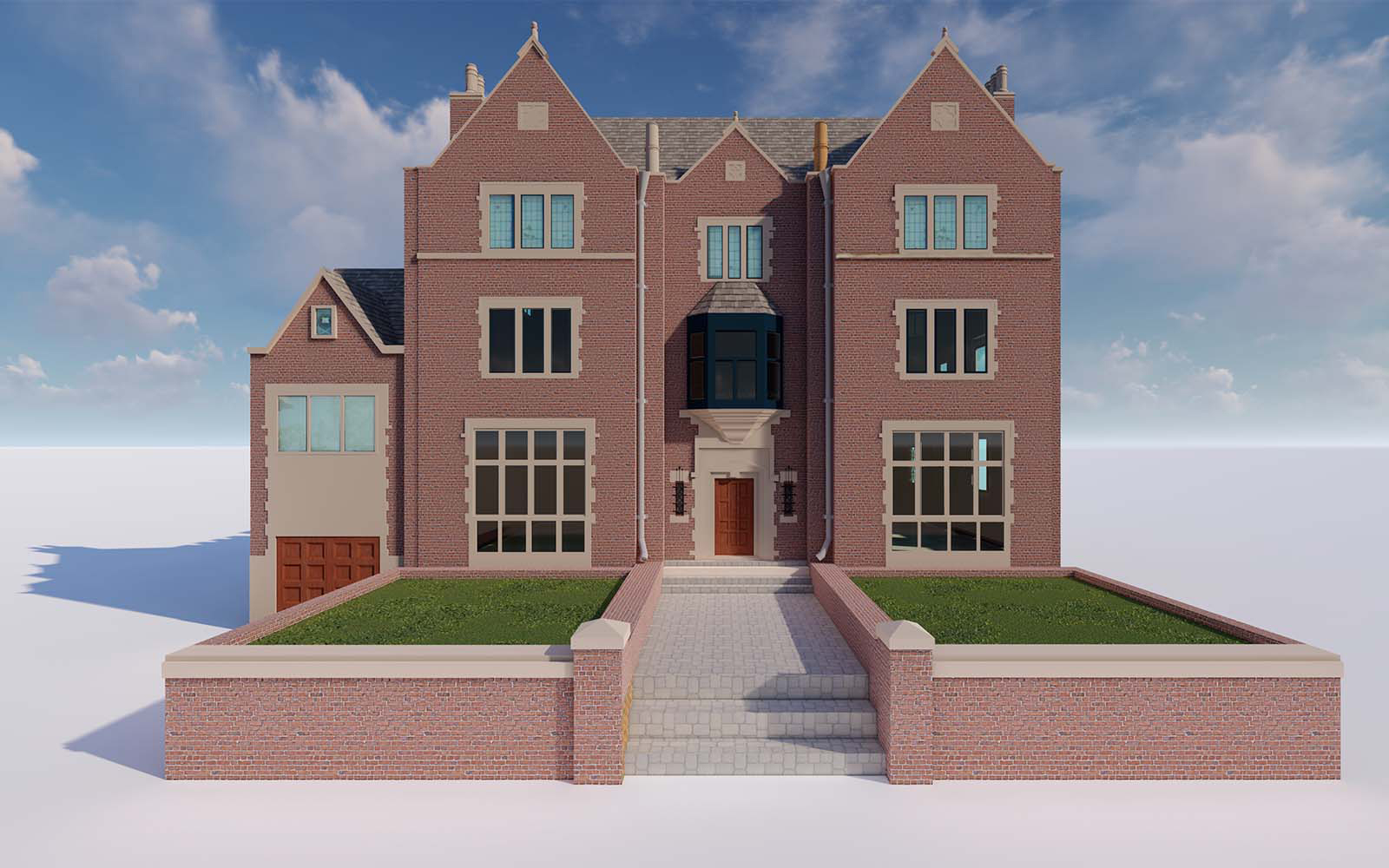
By concentrating on the Rebbe’s images and teachings, especially within the framework of one or another version of 770, his followers may discover themselves to be in a place where individual and collective sublimation merge. In the thrill of that communion there emerges a foreshadowing of the moment when 770, per the Rebbe’s vision, launches off the earth from Eastern Parkway, and flies 5,710 miles eastward from Brooklyn to its climactic touchdown in Jerusalem—setting off that totalizing, transformative repetition when it could be said that the entire world will become 770.
George Prochnik’s most recent book, I Dream with Open Eyes, was published in September 2022 by Counterpoint Press.
Spotted an error? Email us at corrections at cabinetmagazine dot org.
If you’ve enjoyed the free articles that we offer on our site, please consider subscribing to our nonprofit magazine. You get twelve online issues and unlimited access to all our archives.